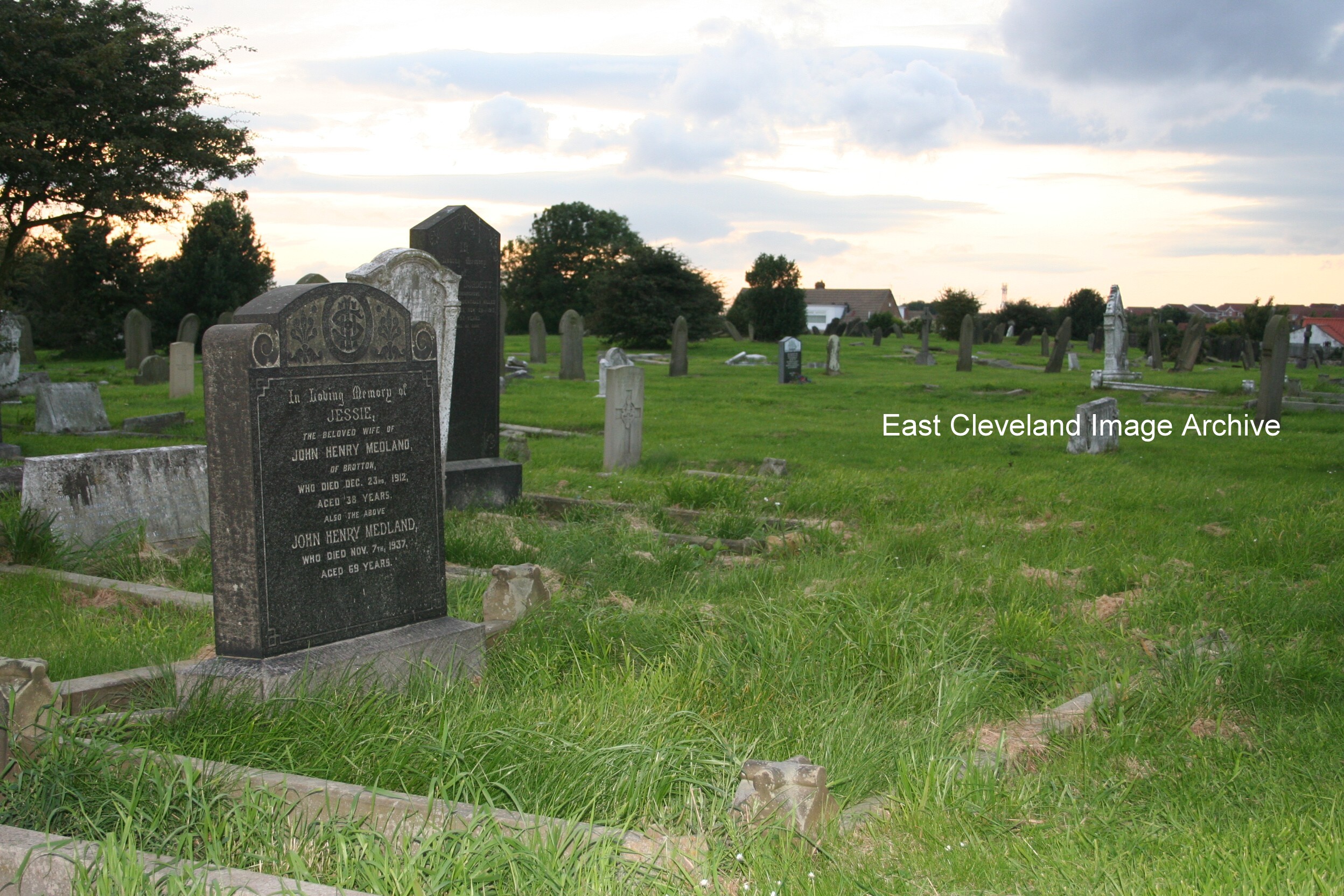
The same graveyard some 70 years later; I can remember it when you couldn’t have found this grave, the grass was so long! At least the grass gets cut sometimes now! What a contrast. .
Image courtesy of Julie Riddiough.
|
|
||
 The same graveyard some 70 years later; I can remember it when you couldn’t have found this grave, the grass was so long! At least the grass gets cut sometimes now! What a contrast. . Image courtesy of Julie Riddiough. 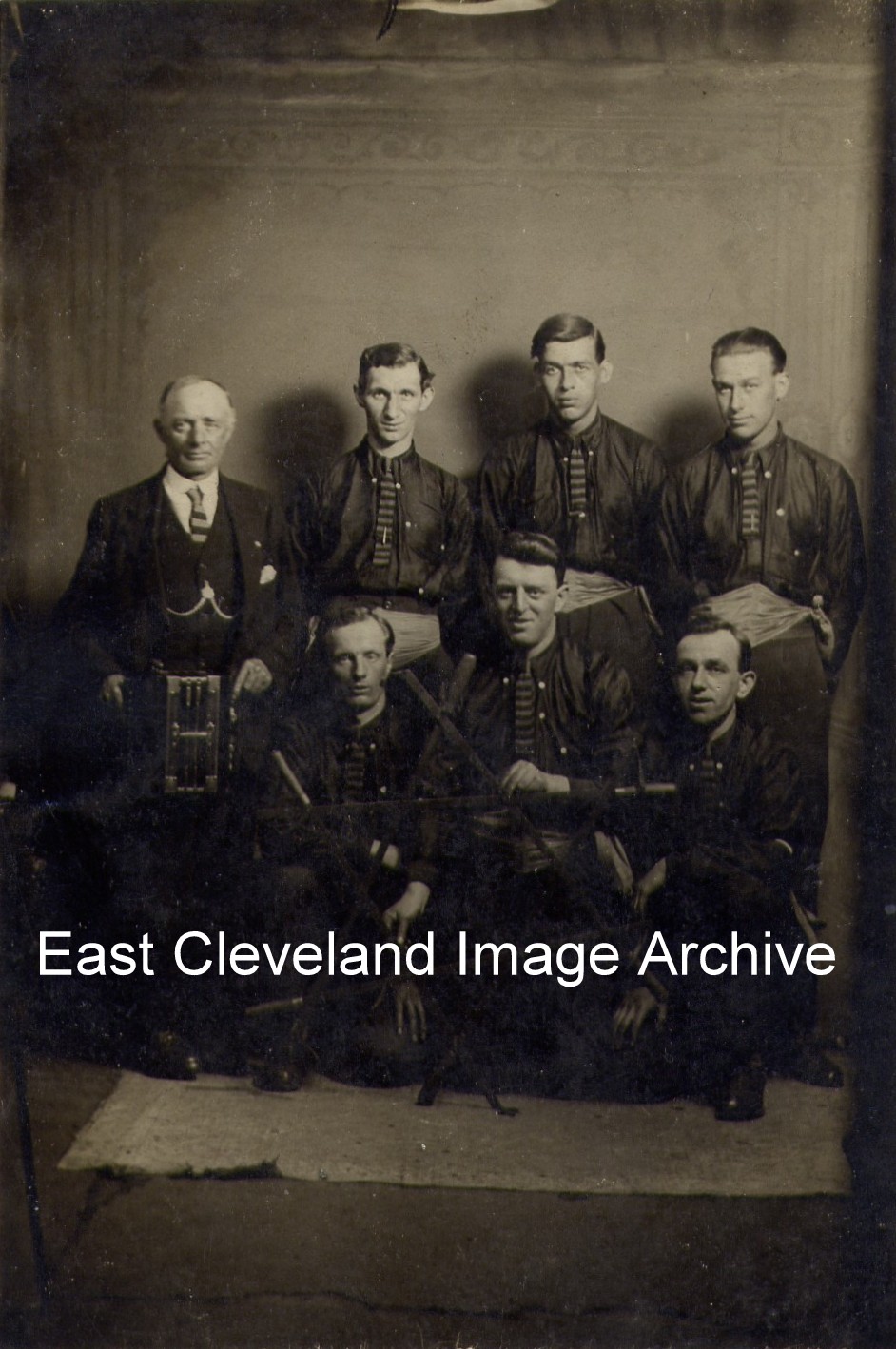 These are the Brotton Sword Dancers; the Archive hopes someone will be able to name them? We’ve lightened the image to try and show the ”uniform” better and particularly love the double watch chain of the squeeze-box player! Back row (L to R): ??, George William Riddiough, ??, ??. Front row (L to R): ??, ??, ??. Image and name courtesy of Julie Riddiough. 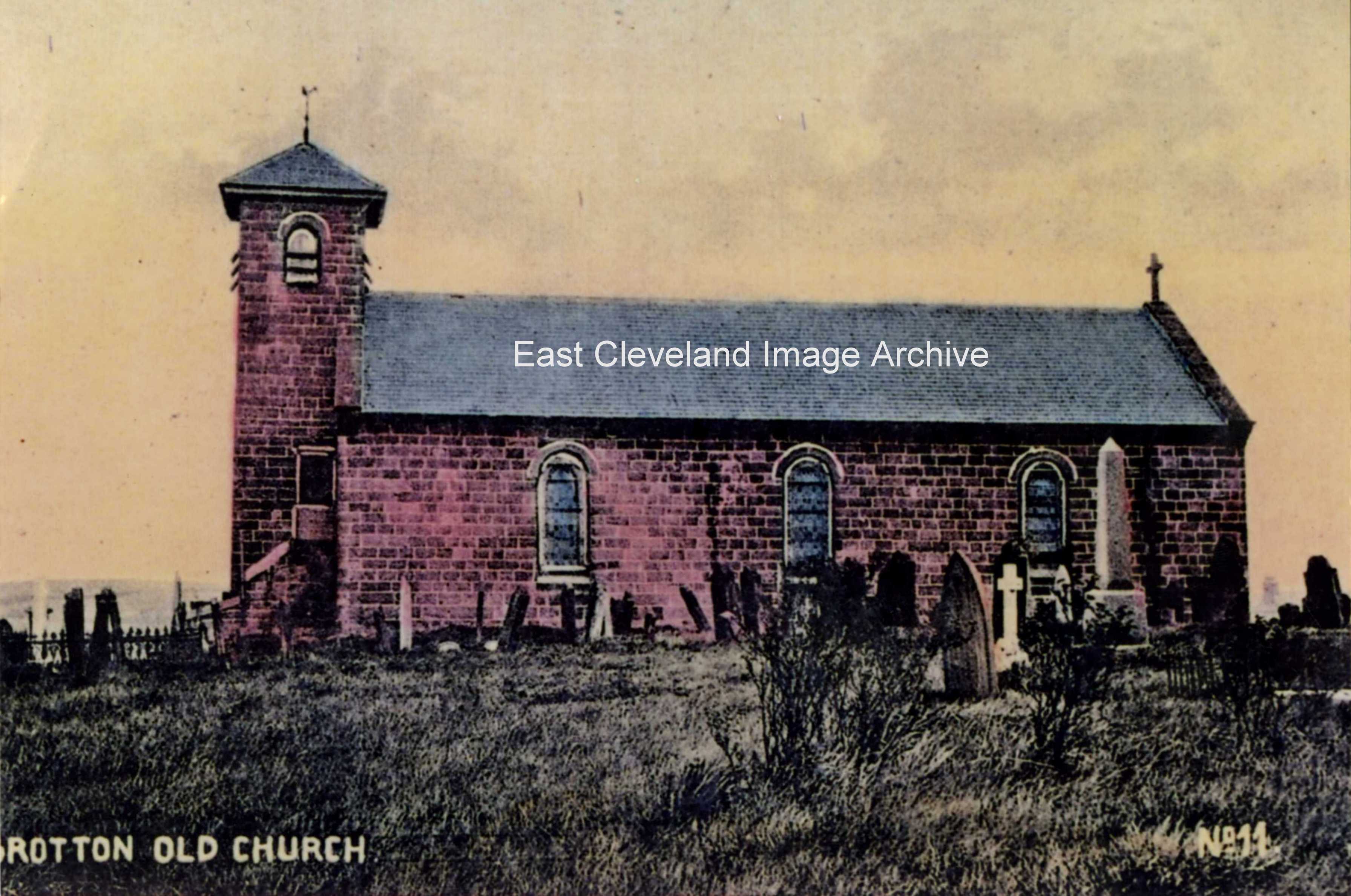 A beautiful hand-tinted image (from a Phoenix Series postcard) of St. Peter’s Church in Brotton. This was the third church to stand on this site. ’British History On-line’ states: ”The chapel was rebuilt in 1778 and is now used as a mortuary chapel. It is a plain rectangular stone edifice, measuring internally 67 ft. by 25 ft., with a tower 6 ft. square at the west end. It is lighted at the east end by a large round-headed window and by three similar but narrower windows on each side.” We are told by Norm Dobbs: ”My grandfather was born in Brotton, Yorkshire, England and came to this country when he was a small boy. I have a shaving mug with the picture of this church with the name ’Brotton Old Church’.” Image courtesy of Kim Whaley and Julie Riddiough, with thanks to Norm Dobbs for that insight. 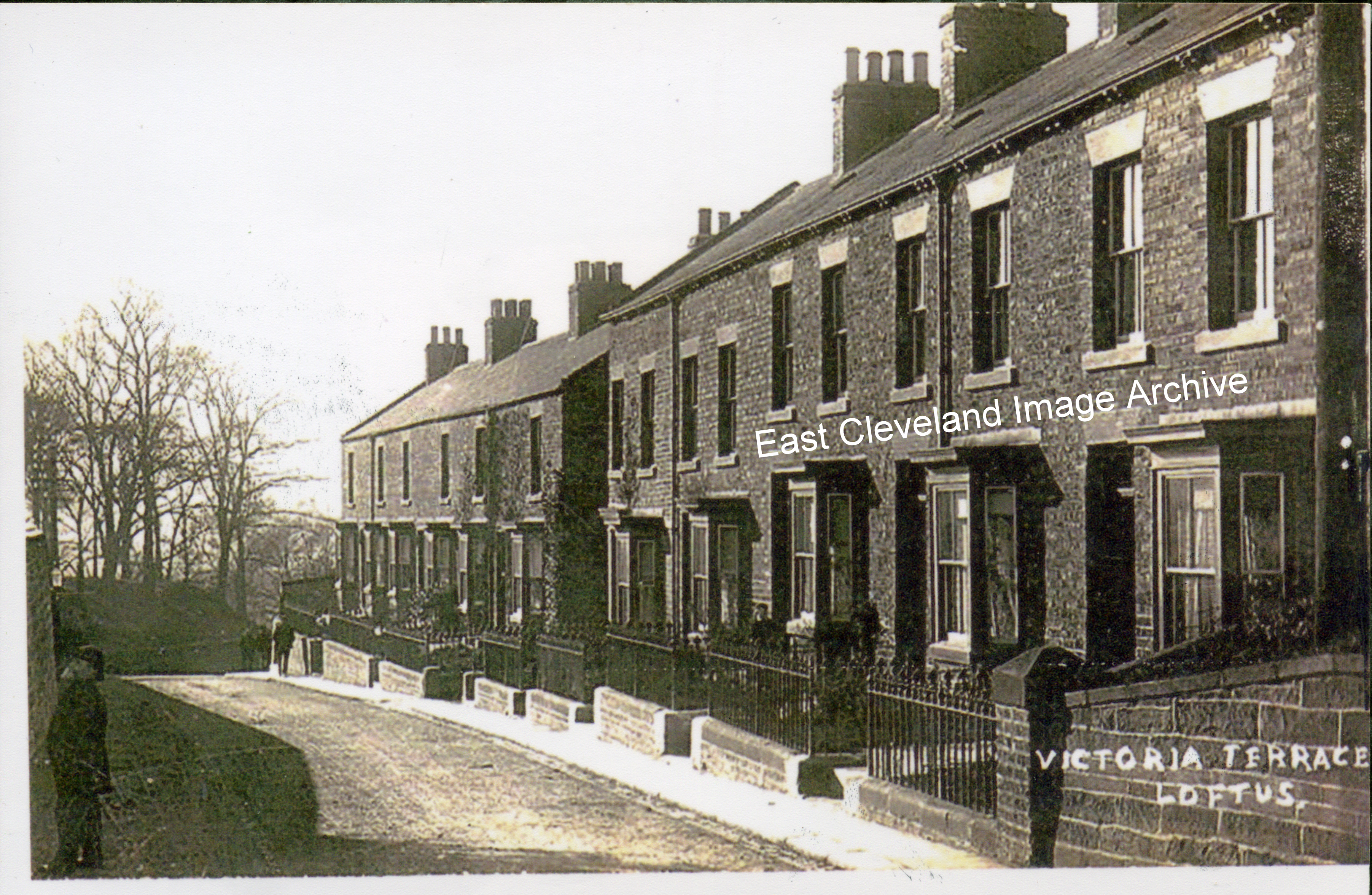 A wonderful view of Victoria Terrace in about 1900. In those days the residents would have a view over open farmland to the front. Note the gentleman in bowler hat and tail coat standing in the road talking, Obviously no buses or speeding traffic! Peter King asked:”I lived at number 8 in the 1940s. When did they take the railings down?” In this image the iron railings are still present, it is likely that the railings were removed as part of the ‘war effort’ in the early part of WWII. There are however, conflicting stories as to the usefulness or actual use of such collected materials. Jean Wiggins advised the Archive: “To the rear was once a candle factory or tallow house, it was closed in 1871 when East Crescent was being built, because of the foul smell emanating from the boiling fat.” Image courtesy of Michael Kilvington, update courtesy of Jean Wiggins and thanks to Peter King for that update. 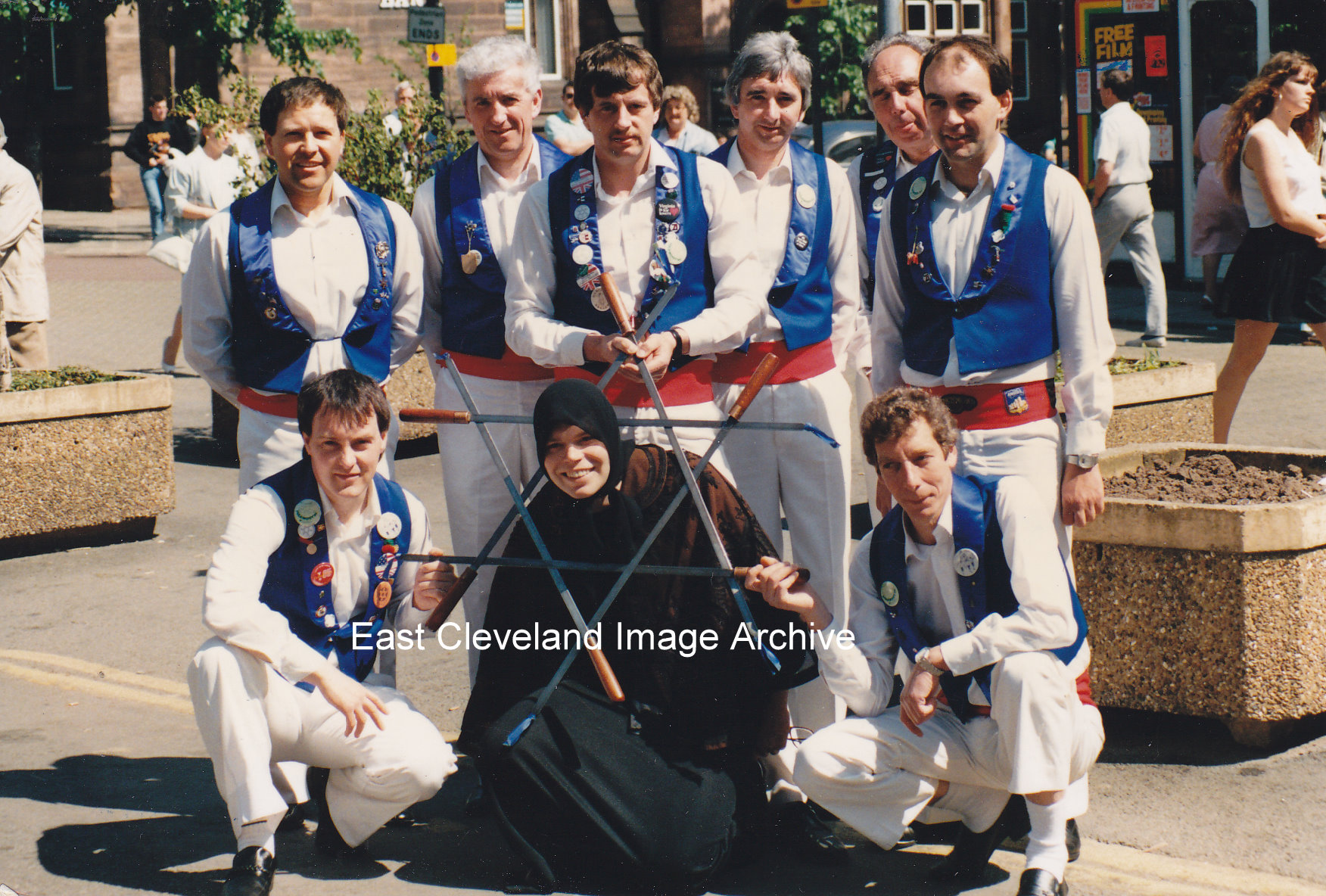 Taken at Chester on Rogation Sunday in 1985, Loftus Sword Dancers pose in the sunshine. The team at that time were: Front row: Colin Chisholm, David Gratton (old woman), Harry Cuthbert. Image courtesy of John Hill. 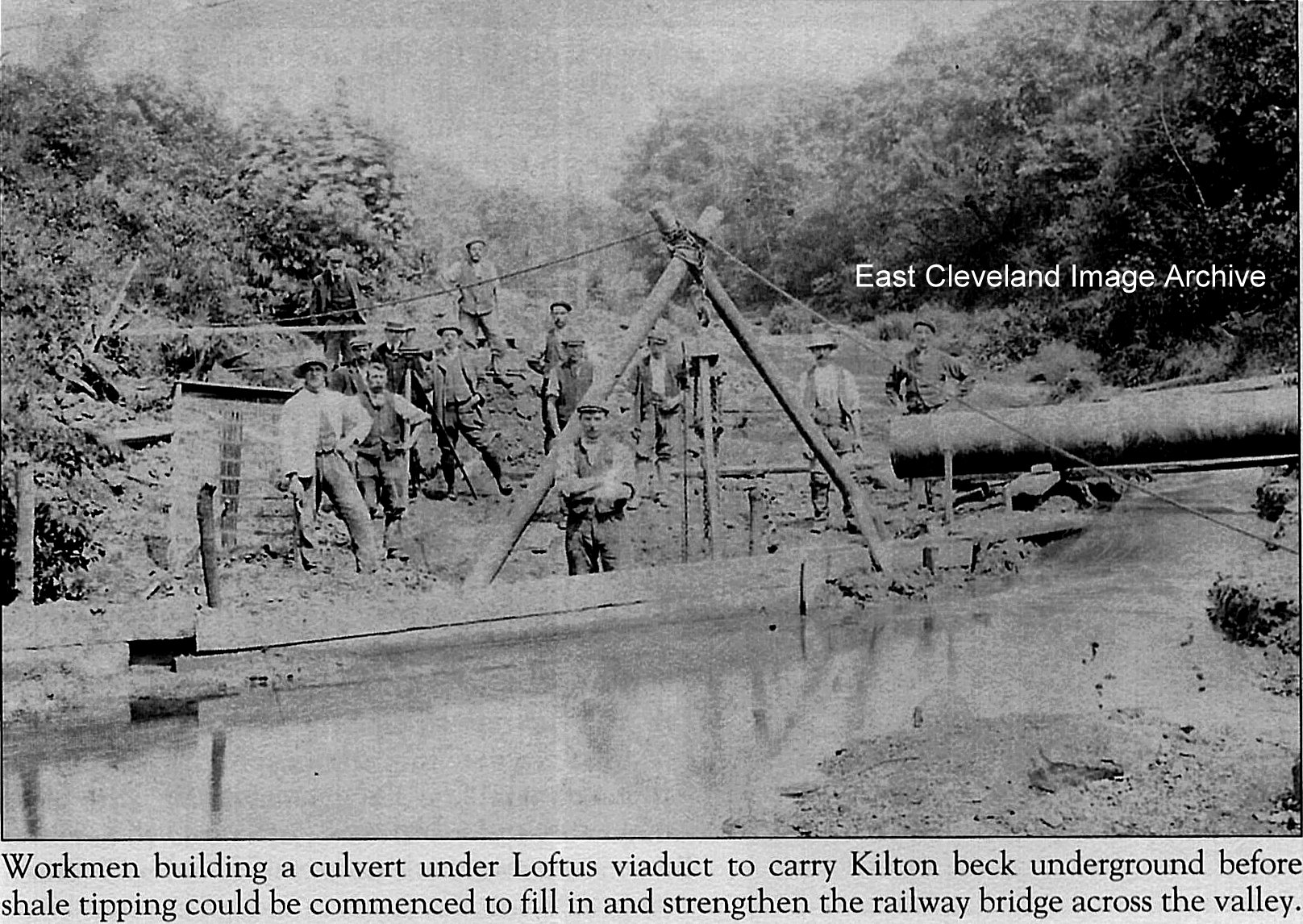 An excerpt from a local paper describing the construction in 1913 of the culvert over Kilton beck prior to the conversion of Kilton Viaduct (also called Loftus Viaduct or Carlin How Viaduct – it depended where you lived!) to the embankment due to undermining of the central support structure by Loftus mine. 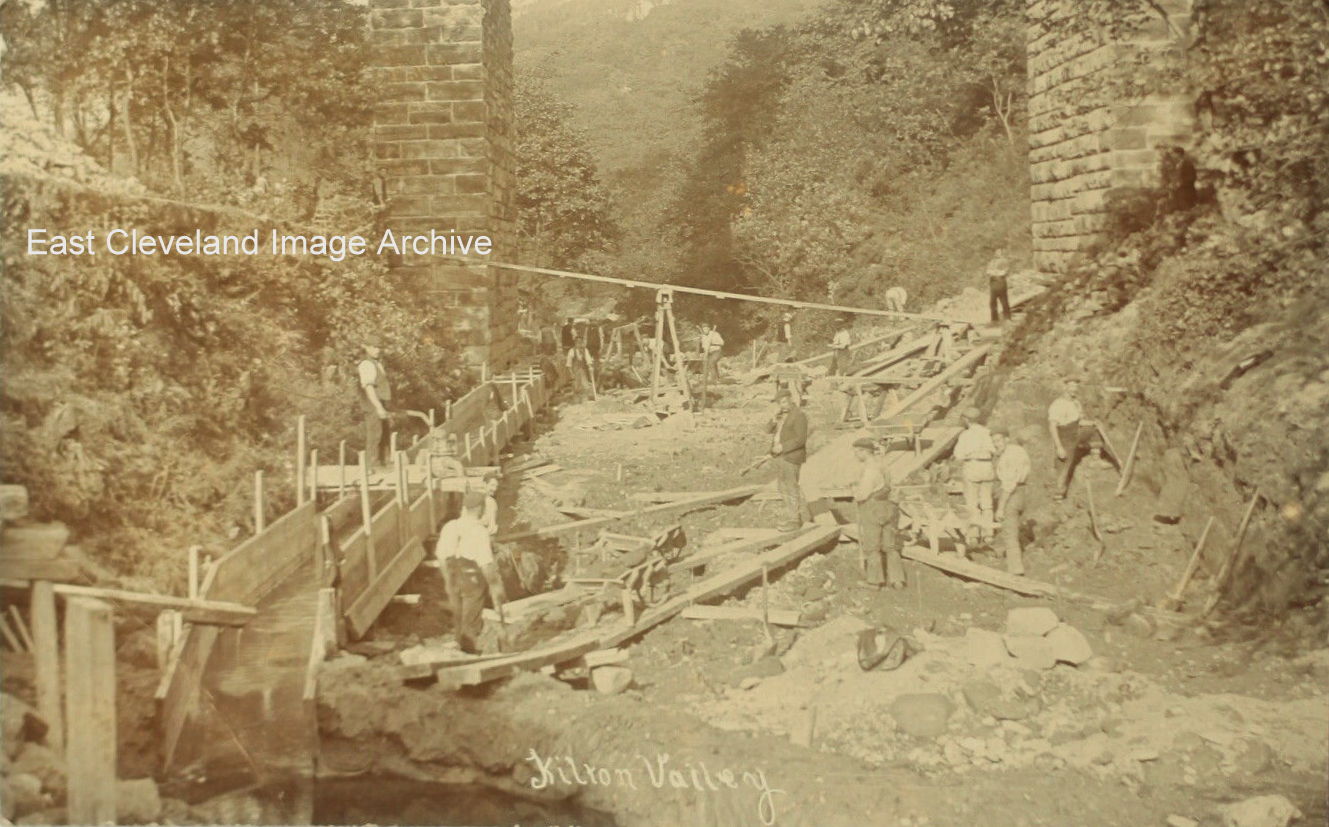 Around about 1911, part of Kilton Viaduct began to suffer from subsidence due to it being undermined by ironstone mining. It was decided to bury the viaduct in shale from the shale tips of the local ironstone mines. Creating an embankment and ensure future stability. Before they could do this it was necessary to culvert Kilton Beck. This image, taken from a postcard shows part of the culverting process; with wooden shuttering in place to make the culvert. Also visible is an aerial rope-way for carrying raw materials to the site. Image courtesy of The Pem Holliday Collection, John G. Hannah (also on cd produced by Derick Pearson). 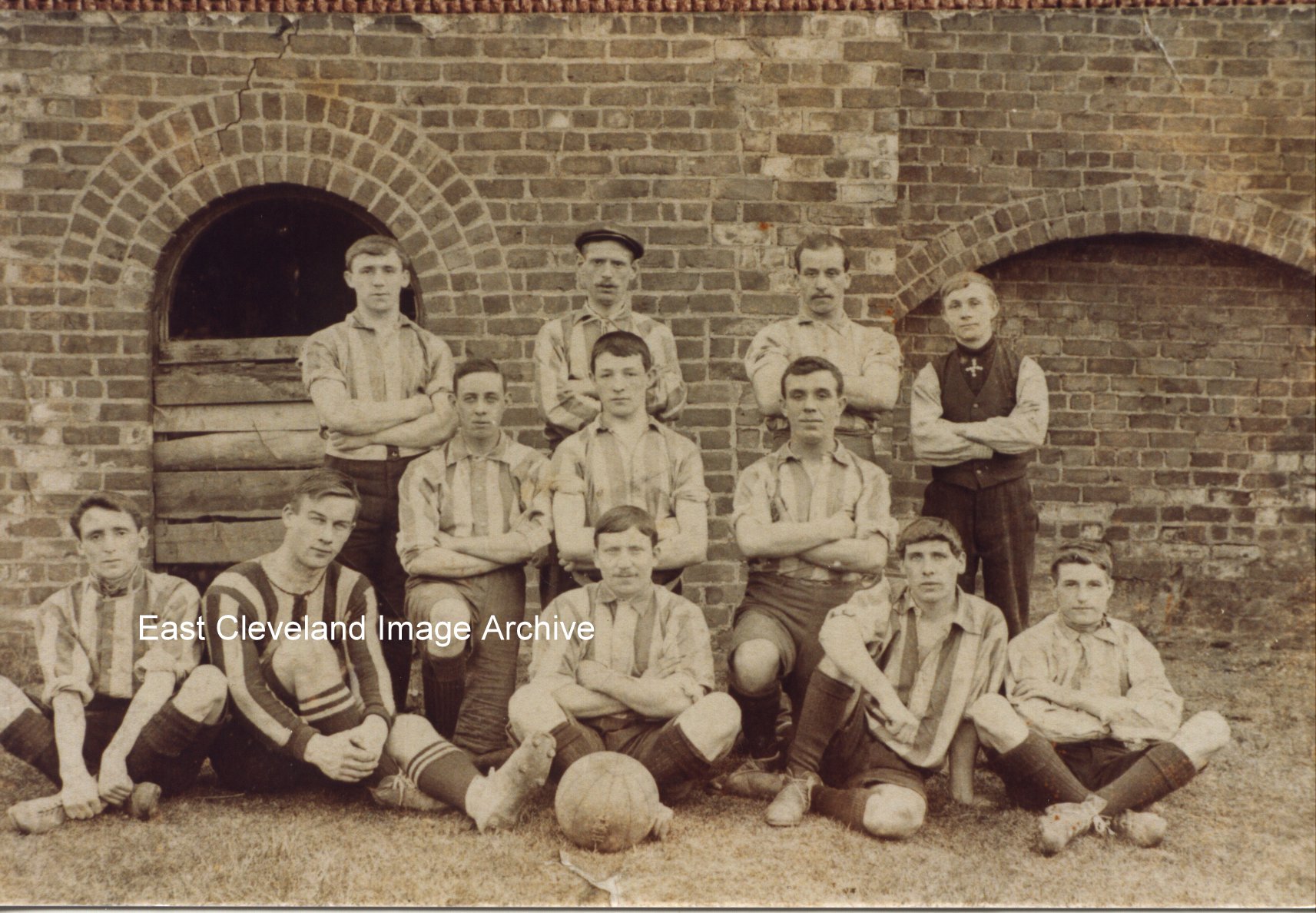 Who was Dave Willey and is he on the photograph, if so which one is he? I would be very grateful if anyone could tell the names of an of the men pictured here, or where the photograph was taken. Derick Pearson commented: “I named it Dave Wiley and team. Dave Wiley was an aged gentleman, he lived in Bells Huts with Sarah his wife who was born there and died there. She was the last resident in those Huts living at Number one. Sarah showed me and some other youngsters this and other photographs; this photograph I obtained many years later was I felt sure a copy of the one I had seen at her home. Hence the name, I put it on display in the 1983 Exhibition but no one confirmed or denied it. Dave is the one in the centre behind the ball if this is one Sarah showed us.” Image courtesy of the Pem Holliday Collection, also contained in a compilation by Derick Pearson in 1983, thanks to Derick Pearson for the update. 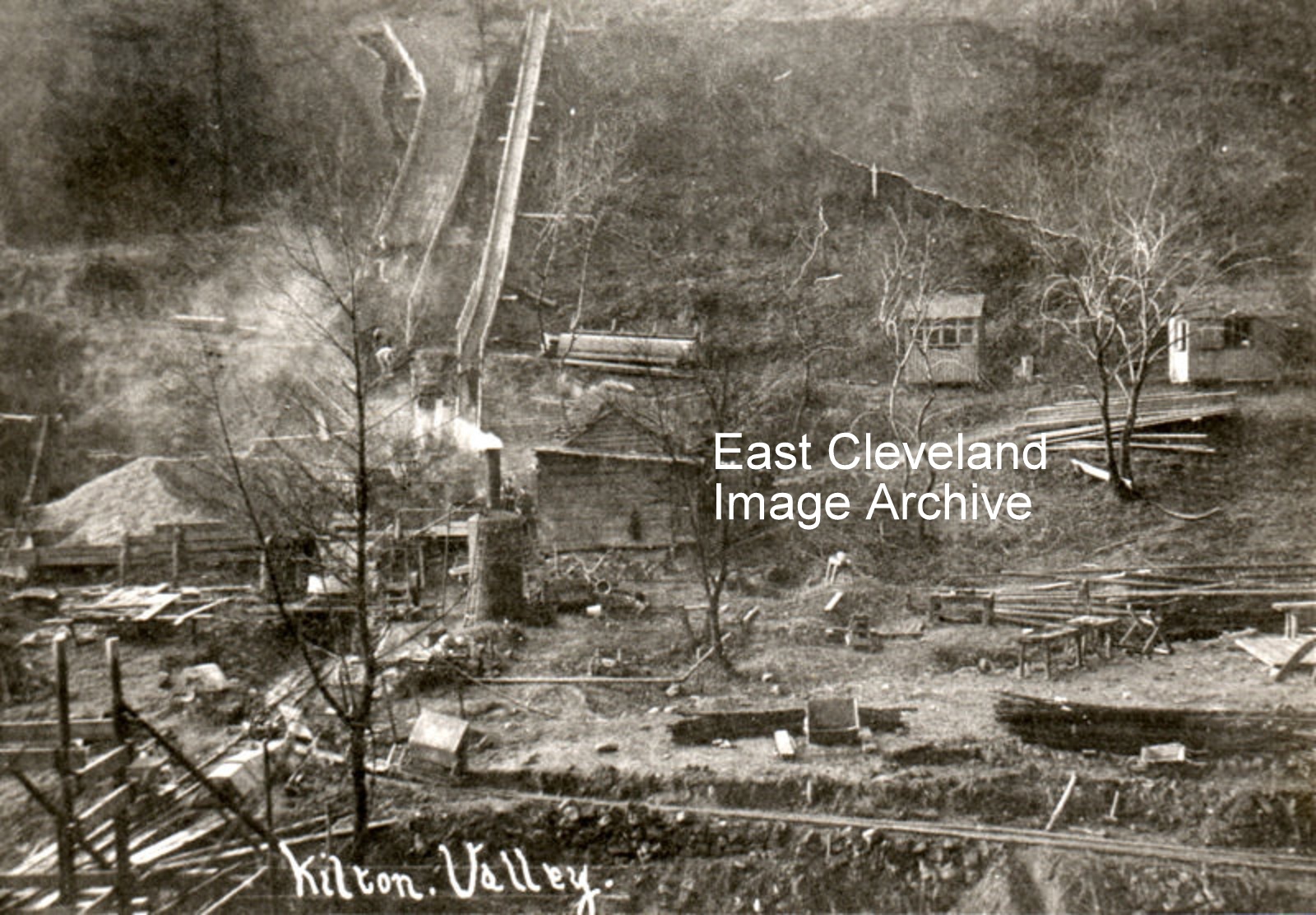 That is what the caption on the photograph says. The Archive asked: “What is happening there? David Richardson suggested: “I’d say this photo shows the works associated with the construction of the Kilton Beck Culvert before the Viaduct was filled in during 1913.” Eric Johnson assists with: “I believe this is the raw materials site; for constructing the culvert under Kilton Viaduct, prior to filling in with shale. The wide chute on the photograph has a large pile of material at the base, the top of the chute is widened to facilitate tipping of wagons, possibly from the zig zag line to Skinningrove. The smaller chute maybe for sending down wooden battens, to the work area; where there is a vertical steam boiler. Possibly to supply steam to a hauler engine for the narrow gauge railway running from the material pile on the left of the photograph. This is on a hopper wagon, some hoppers are alongside the rails, upside down. Stacks of wooden planks can be seen on the hillside near the cabins, with several saw benches for making the shuttering for the culvert arch.” Derick Pearson also offered: “The narrow chute reminds me of the type used to walk down to a work site when on a batter side, there is a man stood in it at the bottom. It could also have been a water chute to feed the boiler and of course be used for the concrete mixes.” This sums up the image satisfactorily. Image courtesy of the Pem Holliday Collection, also thanks to David Richardson, Eric Johnson and Derick Pearson for resolving query as to when and why. 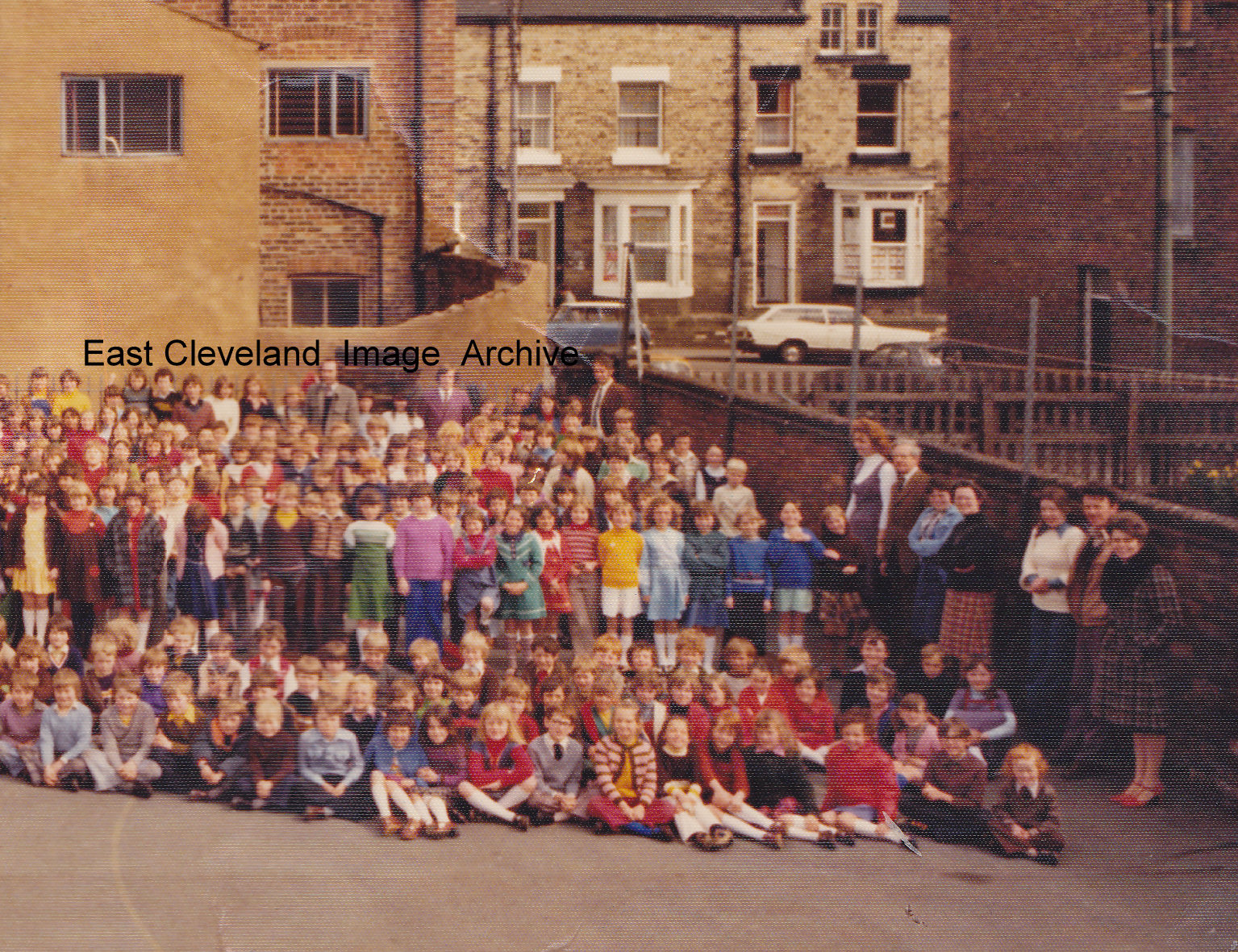 The third and final slice! Pauline Magor comments: “OMG that’s me in the purple jumper and blue trousers, still no fashion sense now lol!” Image courtesy of Marian Toulson, thanks to Pauline Magor for the update. |
||
Recent Comments